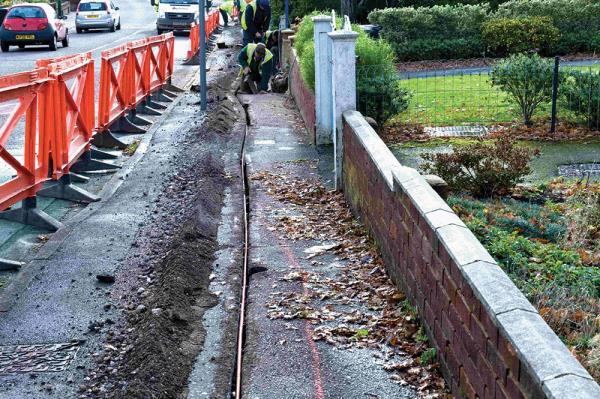28 August 2018

Nationwide availability of full fibre is likely to require additional funding of around £4bn to support commercial investment in remote and rural areas.
The government is promising “a full fibre broadband and 5G future for all” as part of its recently outlined Future Telecoms Infrastructure Review (FTIR).
In July, the Department of Digital, Culture, Media and Sport (DCMS) announced that the cost of rolling out fibre broadband will be “slashed”, and that remote rural areas will be prioritised for funding. It said that at the FTIR’s heart is an emphasis on greater consumer choice and initiatives to promote quicker rollout and an eventual full switch over from copper to fibre.
According to the DCMS, its proposals will give the majority of the population access to 5G, connect 15 million premises to full fibre broadband by 2025, and provide full fibre broadband coverage across all of the UK by 2033. It added that full fibre infrastructure is vital to underpin 5G coverage.
The FTIR’s analysis indicates that, without change, full fibre broadband networks will at best only ever reach three quarters of the country, and it would take more than twenty years to do so.
The government said proposed new legislation will guarantee full fibre connections to new build developments. Operators will be given a ‘right to entry’ to flats, business parks, office blocks and other tenanted properties to allow those who rent to receive fast, reliable connectivity, from the right supplier at the best price.
Among some of the other changes, the DCMS said there will be: regulatory reforms for full fibre broadband that will drive investment and competition; public investment in full fibre for rural areas to begin simultaneously with commercial investment in urban locations; an industry led switchover from copper to full fibre coordinated with Ofcom; a new nationwide framework which will reduce the costs, time and disruption caused by street-works by standardising the approach across the country; and infrastructure owned by other utilities such as power, gas and water, becoming easier to access and available for both fixed and mobile use.
Nationwide availability of full fibre is likely to require additional funding of around £3bn to £5bn to support commercial investment in around the final 10 per cent of areas. The government said that these are often rural areas and “must not be forced to wait” until the rest of the country hasconnectivity before they can access gigabit-capable networks.
As a result, the DCMS said the government will pursue an “outside-in” strategy. That means while network competition serves the commercially viable areas, Westminster will support investment in the most difficult to reach areas at the same time.










